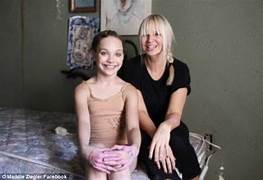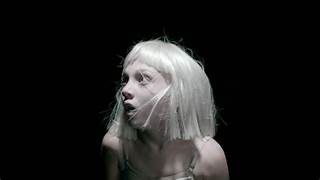
Titanium (D Guetta/S Furler/G Tuinfort/N van de Wall) 2011 and Diamonds (Sia/B Levin/MS Eriksen/T Heymansen) 2012 and Elastic Heart (S Furler/TW Pentz/A Swanston) 2013 and Chandelier (S Furler/J Shalkin) and Big Girls Cry (S Furler/C Braide) – Sia 2014
Following the failure of her third album Colour The Small One, Sia moved to the US in 2005, where her new manager David Enthoven, organised tours for her across the country. But the release of her fourth album Some People Have Real Problems in 2008 stalled at #26 Stateside, and successive singles, which charted her personal struggle to beat addiction, The Girl You Lost to Cocaine, Soon We’ll Be Found both in 2008, and Buttons (’09), all failed to impress. But she emerged in 2010 with the album We Are Born, which crystallized both her emergence from years of fighting and defeating addiction, and her progress towards the successful commercialization of her music and the emergence of her unique public persona. She would quickly explode onto global markets in a dramatic way as a co-composer, featured artist, and collaborator with music producers on hit songs for herself, and major artists across a spectrum of pop genres, including Christine Aguilera, David Guetta, Flo Rida, Rihanna, Beyonce, Celine Dion, Britney Spears, and Eminem. Below- Album Artwork- Sia and Flo Rida, Rihanna, and David Guetta.



Her collaboration with French DJ and record producer David Guetta and co-writers Giorgio Tuinfort, and Afrojack, would produce the pristine EDM megahit Titanium in 2011, a pop song which fused house and urban -dance genres with lyrics about inner strength, and was the subject of some friction between Guetta and Sia. The song was originally intended for Mary J Blige, but later offered to Katy Perry who declined, there were several demo versions of Titanium around, one by Sia and another by Mary J Blige, but it was Sia’s version that Guetta liked “I was totally amazed by Sia … This has made me more curious to study her music more because I was really impressed. I have the biggest people on the album and she has a different profile, more like an indie kind of artist and it makes her song even more special, it makes it stand out I think.”
The vid was filmed in 2011 at the Dorval-Jean -XX111 High School in Quebec (Can) and featured the young actor Ryan Lee, who appears walking through a school in disarray with papers and books scattered in classrooms and passages. This young boy casually walks along a corridor, a teacher sees him and quickly closes a door, is the boy a deranged shooter? He exits the school, the teacher alerts a SWAT team that “he is the one”, the boy escapes and flees to his home; after a confrontation between the boy and the SWAT team he uses telekinetic powers to escape – many questions remained unanswered here, so far it has received 1.8 billion views on YouTube.
Sia later revealed that Guetta put her vocals on the song without her consent, nor was she made aware that her vocals would be released, “I never even knew that Mary J Blige’s vocals were to be removed and replaced by my demo vocals, and I was really upset, because I had just retired, I was trying to be a pop songwriter, not an artist.”, she later stated. Clearly Sia was now focused on writing songs and not being a pop star, she did not appear in music videos where she sang or guested as a featured singer, preferring her fans to focus on US dancer Maddie Ziegler in her clips, or using stand-ins to mime her words, or developing abstract themes that downplayed her personal celebrity or public profile. Despite the spat with Guetta the record was a global hit, selling over 10 million copies, giving Sia her first #1 hit (UK) and got her into Guetta’s powerful inner circle. This included Atlantic Records Director of A&R Ben Maddah, who then introduced Sia to American rapper Flo Rida and his team, which would yield yet another megahit, Wild Ones in 2011. Written by Rida, Sia, Jacob Luttrell, Marcus Cooper, Niklaas Vogel-Kern, and producers soFLY & Nius and Axwell. It was uptempo dance-pop with house and electro house influences and lyrical themes of partying, love, and dancing, it was #1 in eight countries, and top 5 in UK and USA, and with over 6 million copies sold it stamped Sia as a go-to hit generator, who was defining the dominant music trends in the decade. Below- Sia and Christine Aguilera, 2x Record Artwork.



Christine Aguilera would also be the recipient of several of Sia’s early co-writes with You Lost Me in 2010 and Blank Page in 2012, but it would be the stunning success of Rihanna’s Diamonds in 2012, a co-write with Sia, Benjamin Levin, Mikkel Eriksen, and Tor Hermansen, a mid-tempo electronic-pop, R&B ballad that featured heavy synthesizers, orchestral sounds and electronic rhythms, that would take Sia’s success into hyperspace. The lyrics were a departure from the themes of unhealthy relationships that had featured on Rihanna’s previous singles, and contrasted the portrayal of lovers as “diamonds in the sky.” It charted #1 in twenty countries including USA, UK, and throughout Europe, and recorded global sales of more than 14 million copies.
Clearly Sia had segued from her early releases, where she was sometimes regarded as a weirdo underdog with a penchant for theatrics, writing zesty, challenging and curious songs that were hits for others , and she would very soon emerge as a superstar in her own right, singing her own songs, albeit often hidden behind an outsize platinum wig, as she became a real-life masked singer, who everyone recognized, but few really knew. Below- Sia’s Disguises.



In October 2013 Sia released the skittering ballad Elastic Heart featuring The Weekend and producer Diplo, written by Sia, Thomas Pentz, and Andrew Swanston, for the soundtrack of the movie The Hunger Games: Catching Fire. It was an electro-pop power ballad, that would become a defiant chart-topping anthem, especially when Sia included it in 2014 on her next album, as a solo outing, in a far superior version. The chorus of Elastic Heart “Well I’ve got thick skin/But and an elastic heart/ But your blade , it may be too sharp/I’m like a rubber band until you pull too hard/Yeah I may snap and I move fast/But you won’t see me fall apart/”Cause I’ve got an elastic heart…”, was a metaphorical tour de force, as a heartbroken Sia searched for a shred of resilience in the throes of an emotionally fraught time. But she was unafraid to show that her new strength wasn’t earned without some scars “Let’s be clear, I trust no one”, she declared.
The promo vid featured Maddie Ziegler who would would appear in the Chandelier vid, and here she was accompanied by actor Shia LaBeouf, performing an interpretive dance in nude and dirt-smeared outfits. It was brilliant, imaginative, and controversial, as the two dance-fought, collapsed in the middle of a cage, crawled toward and away from each other, and made some wildly fantastic facial expressions. Maddie was only 12 years old and Shia 27, so complaints about pedophilia were forthcoming, even though Sia explained that both dancers represented “warring Sia-self states”, and nothing exploitive was intended. Sia’s solo version of Elastic Heart was a global hit selling over 7.5 million units/copies and making the top 10 in Australia, UK, Canada, Norway, Spain, Poland, and USA. Below- Maddie Ziegler in Chandelier, Sia and Maddie now, Album Artwork.



In 2014 Sia released her uber-radio-friendly breakthrough solo album, 1,000 Forms of Fear, and its centrepiece was Chandelier, an era-defining soundscape, that would become much-admired, and much-imitated. An electropop song written by Sia with producer Jesse Shatkin, it featured electronica, R&B, reggae, with soaring synthesizers, powerful percussion, and hip-hop beats. Lyrically it had a melancholic theme, dealing with the demoralization and rationalization of alcoholism through the thoughts of a “party girl”. “Party girls don’t get hurt, can’t feel anything…I push it down” and during the chorus Sia sang, “I’m gonna swing from the chandelier, from the chandelier/ I’m gonna live like tomorrow doesn’t exist, like it doesn’t exist”. Sia’s personal battle with addiction inspired the feelings of release and abandon associated with intoxication, as well as the pain, guilt, and desolation that accompany alcoholism and hedonistic excess. Sia’s ethereally riveting vocals delivered a pop masterpiece that has inspired others to cover the song including acoustic versions by Sara Bareilles and Irish three-man harmony singers Script, and more recently the cast of the musical Choir of Man whose a cappella treatment has been much praised.
The music video featured 12-year-old Maddie Ziegler performing an interpretive dance wearing a medium-length version of Sia’s blonde wig, while spinning, kicking, leaping, crawling, falling, and twirling, through a deserted, dirty apartment, it was arguably the most stunning music video of the year, and has registered 3 billion views on YouTube to date. Chandelier was a global smash hit and sold in excess of 14 million copies. Below – Scenes featuring Maddie in Big Girls Cry.



Big Girls Cry would be the second song lifted off the album but it was not released internationally, only in Australia and parts of Europe. This was another introspective ballad by a heartbroken Sia dealing with life’s disappointments “I’m at home/On my own/Check my phone/Nothing through/Act busy/Order in/Pay TV/It’s agony/…I may cry, ruining my makeup/ Wash away all the things you have taken/And I don’t care if I don’t look pretty/…Big girls cry when their hearts are breaking” The music vid again featured Maddie Ziegler facing the camera using her hands and face to express emotions. At one point a pair of hands comes into the frame (shown in behind-the-scenes footage to be Sia’s own hands) manipulating Ziegler’s face and covering her mouth, they appear to lift Ziegler by the throat into the air until only her kicking feet are shown, then Ziegler drops back into the frame to resume her emotive facial contortions.
It was edgy, imaginative and again controversial as it was criticized for mimicking the tics of people with autism and Tourette Syndrome. By Sia’s standards it was a modest 750,000 unit seller, but the album 1000 Forms of Fear shifted over 3 million units and was the 14th biggest-selling album of 2014, and Sia was still only in the middle of a purple patch of her burgeoning career.


